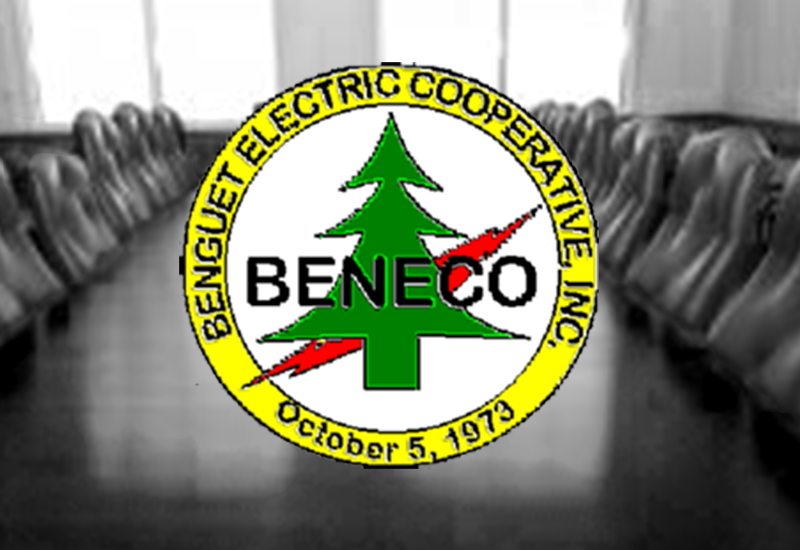BONTOK, Mountain Province – Schools in the four central barangays of this municipality are prepared in any occurrence of an earthquake.
This was proven during the National Simultaneous Earthquake Drill (NSED) for the 2nd quarter in the afternoon of June 21, 2018.
Evaluators gave a thumbs-up to Bontoc Central School (BCS), Mountain Province SPED Center, Mountain Province General Comprehensive High School (MPGCHS), MPGCHS – Senior High, All Saints Mission Incorporated School (ASMIS), Ut-utan Primary School, Samoki Elementary School and Camp Montes Child Development Center for their familiarization of the duck-cover-hold technique and proper evacuation procedures for the eventuality of a powerful temblor.
The evaluators gave outstanding scores to the participating schools for their readiness before, during and after an earthquake.
Members of the evaluating team are personnel from the Municipal Disaster Risk Reduction and Management Office (MDRRMO), Municipal Tourism Office, Bontoc Fire Station, Bontoc Municipal Police Station (MPS), Office of the Municipal Mayor, Municipal Health Office/ Rural Health Unit, students from the MPGCHS who were trained responders and trainees/recruits under the Field Training Program (FTP) of the Philippine National Police (PNP).
As per observation, students and faculty executed the six steps necessary to do during an earthquake. First is the alarm such as the siren or bell, as a pre-arranged signal that indicated the occurrence of an earthquake or ground shaking.
Second is the response. While the siren or bell is ongoing, everyone moved away from windows, glass or lights. It is also in this phase that everyone performed the “duck, cover and hold” under the desks, tables or chairs and remained in this position until the ground shaking stopped.
Third is the evacuation phase. In this phase, once the shaking stopped, teachers and students waited for 10 seconds, evacuated the school building using pre-determined routes and followed the “buddy-buddy system” going to identified evacuation areas.
Fourth is the assembly in which at the designated evacuation area, students grouped together according to the class where they belong.
Fifth is the head count. The teachers checked and made sure that all students were accounted for.
The sixth phase is the evaluation in which problems encountered during the earthquake and how this can be corrected in future occurrence of earthquake.
During the post-evaluation conducted after the drill, evaluators assigned in schools remarked that the participants passed the earthquake drill, but with minimal lapses. Among the observation raised were some of the students did not take the drill seriously, some did not properly execute the “duck – cover- hold”, some did not observe the “buddy-buddy system”, others walked the normal pace instead of walking faster, some students were still standing when they arrived at the evacuation area, some teachers did not do the head count of their students while others let their students did the head count.
Despite these, the participating schools have demonstrated a huge improvement in their readiness and responsiveness in any occurrence of an earthquake compared to the conduct of the 1st Quarter NSED.
Division Disaster Risk Reduction Management (DRRM) Coordinator Leila P. Abad of the Department of Education (DepEd) –Mountain Province expressed her gratitude to the Bontoc Local Government Unit (LGU) through the MDRRMO for continuously assisting the schools in the conduct of quarterly earthquake drills.
She said that this is very helpful especially to the children as it aimed to intensify schools’ earthquake preparedness.
In response, MDRRM Officer Johanna F. Padaen commended the faculty and students for actively participating in the earthquake drill saying that this is helpful for them to be always prepared especially that earthquake occurs without a warning.
She explained that the conduct of quarterly earthquake drills is necessary as it intensifies readiness, awareness and responsiveness of the public.
Padaen also extended her gratitude to all the offices and agencies who assessed the participants stressing that their recommendations are of great help to improve the earthquake preparedness of the schools.
“The goal of the drill is to assess the level of preparedness of schools and community in response to earthquake,” Padaen reiterated.
Thus, prior to the execution of the earthquake drill, representatives from Dep-Ed Mountain Province, drill evaluators from Bontoc LGU, Bontoc MPS, Bontoc Traffic Enforcers, Bontoc Fire Station, Poblacion Child Development Center, recruits under the FTP of the PNP convened to plan out and prepare the conduct of the drill. Also, the roles and responsibilities of each team on the mechanics of the drill were further discussed.
Bontoc Mayor Franklin C. Odsey also enjoined the cooperation of all sectors to take the activity seriously to attain its objective especially that this is conducted quarterly.
“We are not praying for calamities to befall our place, but should it be unavoidable, at least we are read,” the mayor stated.
The NSED is a regular activity spearheaded by the National Disaster Risk Reduction and Management Council (NDRRMC) which is cascaded down to local DRRMs to promote a culture of safety awareness and foresight among all people.
The 2nd NSED was participated in by 3,118 individuals to include teachers and students from the four central barangays of Bontoc and employees of the Bontoc LGU.
By Alpine L. Killa














